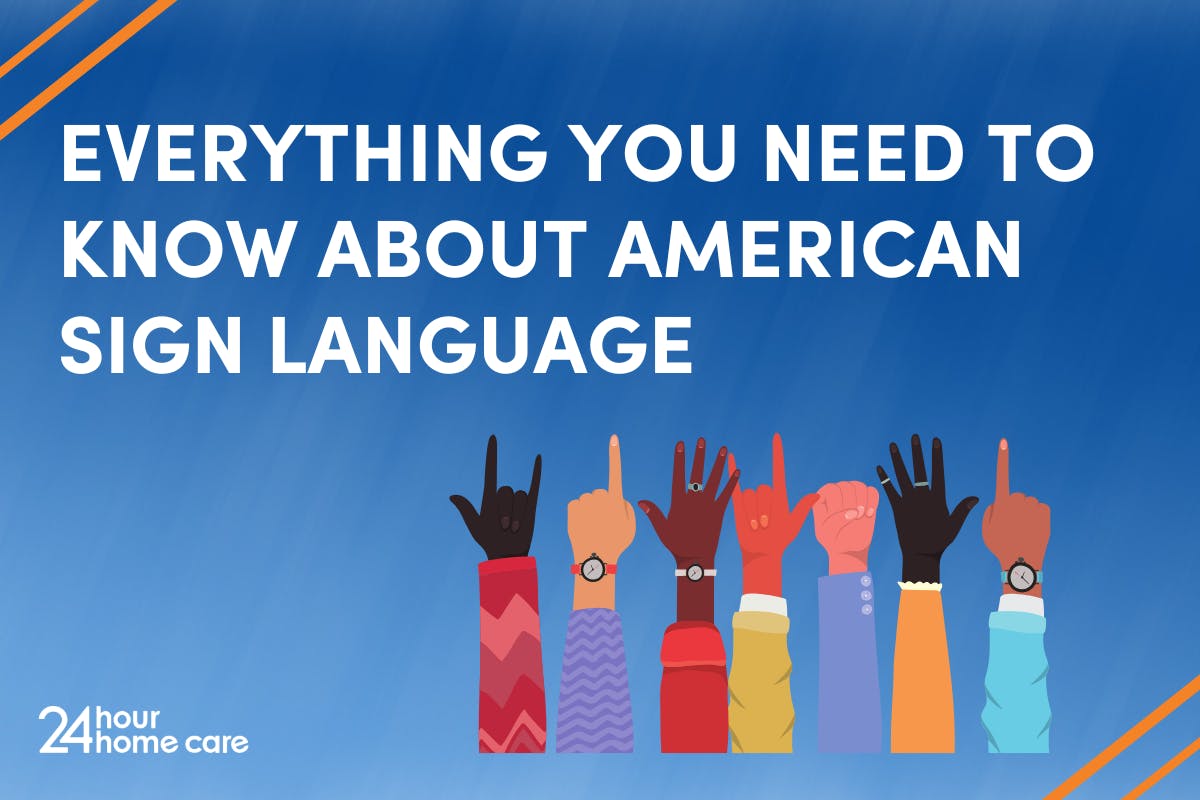Everything You Need to Know About American Sign Language
American Sign Language, also known as ASL, is a language used by people who are deaf and hard-of-hearing. It is a language that’s rich, complex, and growing in usage. Here is a breakdown of what you need to know about ASL.

American Sign Language, also known as ASL, is a language used by people who are deaf and hard-of-hearing. It is a language that’s rich, complex, and growing in usage. From ASL interpreters at concerts to classroom assistants, more people are learning the value of this language.
What is ASL?
ASL is a fully developed visual language. While it does have the same properties as most spoken languages, ASL’s grammar is different than the written and spoken English language. ASL is expressed with hand and facial movements and is the primary language for deaf and hard-of-hearing North Americans.
Though ASL was created and first adopted in North America, it is now used in many parts of the world. While the US and Canada are the primary adopters of ASL, ASL is used in parts of Africa, Asia, and the Caribbean. Just like English and other languages, different regions can have different sign language dialects.
Tracking the number of ASL users presents unique challenges, but it is estimated that there are between 250,000 and 500,000 ASL users in the US and Canada. ASL speakers include people who are hard of hearing and deaf, but also include friends and family members who want to communicate with their loved ones, interpreters, and teachers.
About 2.8% of the US population speaks ASL, making it the third most spoken language in the United States, just behind English and Spanish.
History of ASL
ASL is a relatively new language. It was created around 1814 when deaf education was first introduced to the United States. At the time, no standard language was in place for individuals who were deaf or hard of hearing.
The pioneer of ASL, Dr. Thomas Hopkins Gallaudet, wanted to teach a neighbor’s deaf daughter how to communicate. Dr. Gallaudet traveled to Europe, where a deaf education system was already in place. After studying with deaf educators in France, Dr. Gallaudet adapted the teachings for American students and established the American School for the Deaf in 1817.
At the American School for the Deaf, ASL was cultivated using a combination of signs based on the French sign language Dr. Gallaudet learned while he was studying abroad, and Native American hand signs.
Is it Hard to Learn ASL?
Just like most other languages, ASL can be hard to learn. Though the language is based on English, it uses unique grammar and syntax, which can be challenging for learners.
Picking up simple words or phrases can be easy for most people. The challenge comes with putting together more complex sentences and phrases. If you are serious about learning ASL, the process can take up to a year, and in most cases, it takes several years to have a full grasp of the language.
ASL has five essential building blocks to the language, they are:
- Handshape
- Palm Orientation
- Movement
- Location
- Expression/non-manual markers
These parameters are used in basic words and phrases and complex sentences. Even a slight turn to the hand can change the expression of a word or phrase. To learn more about these parameters, click this link for a worksheet from ASL Defined.
If you or someone you know is interested in learning ASL, there are plenty of classes available. Here are some places to look for classes:
- Community college campuses
- Community centers
- ASL Language Academies
- Many schools for the deaf offer ASL classes
ASL Resources
In addition to schools and community centers, there are a number of online resources for ASL speakers. Here are some of the most useful resources:
Deaf Latinos y Familias Organization – The Deaf Latinos y Familias Organization is a non-profit that works with Latinx communities to promote deaf, hard of hearing, and non-verbal awareness by providing families with resources and Spanish-speaking ASL classes.
California Hands and Voices – This organization supports families with children who are deaf or hard of hearing. They do this by providing educational materials, communication tools, and language opportunities.
Navigating Sign Language Interpreter Certification Requirements in the U.S. – This blog shares the requirements needed to become a certified sign language interpreter.
